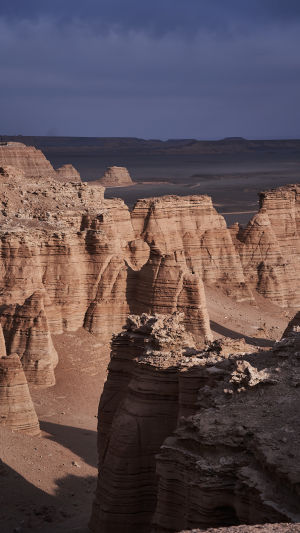And do you know how the Gobi Desert was formed?
Scientists believe that since 2 million years, especially the middle, late and Pleistocene periods hundreds of thousands of years, the dry climate zones have been expanding due to the rising terrain.
The sandstone and conglomerates deposited on the surface of these zones were continuously weathered and stripped under the action of the sun and wind, turning them into a large amount of debris material.
Whenever the dry season comes, the fine sand and dust in the debris material on the floodplain under the action of high winds are blown into the sky, where the dust is blown to areas thousands of miles away, forming a plateau.
Those fine sands are then carried by the wind to the vicinity, forming deserts.
The larger gravels were left in place, forming the present-day Gobi Beach landscape.
The Gobi is a desert terrain of coarse sand and gravel covered with hard soil layers.
According to the cause of gravel Gobi can be divided into three types: weathered, water, and wind.
The main reason for its formation is alluvial flooding.
When floods occur, especially in mountainous areas, due to the gradual weakening of flood energy out of the mountains.
The following geomorphic features are formed in the area of flood impact: large rocks are piled up at the nearest mountain pass, and the rocks become smaller in sequence outward toward the mountain.
Due to years of sunlight, the angles are gradually rounded and become what we call rocks.
In this way, Gobi beach is formed. The finer sands and mud are alluvial and float farther away, forming the great desert further away.
The Gobi Desert may appear to be in harsh conditions, but its unique ecological environment is also conducive to life and production.
Although the Gobi Desert means a place without water, this vast land actually has many saltwater lakes.
There are also many underground springs that spill out of the rocks and sand dunes.
Desert water systems are primarily subsurface, with few surface rivers flowing regularly.
Mountain streams are confined to the Gobi margin, and even then they dry up quickly when they flow into loose soils or salty, enclosed depressions.
Many rivers flow only in summer.
Groundwater, on the other hand, is widely distributed and of sufficient quality for livestock.
The Gobi Desert is so amazing, you must visit it if you have the chance.





